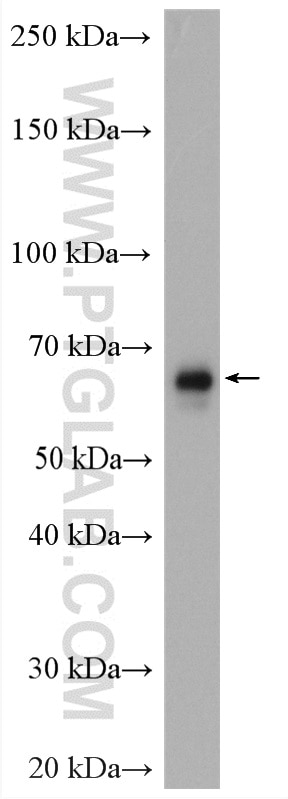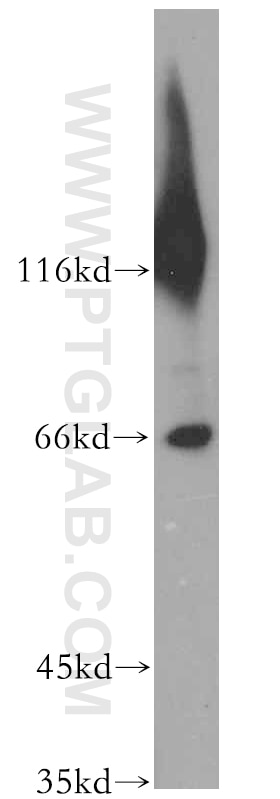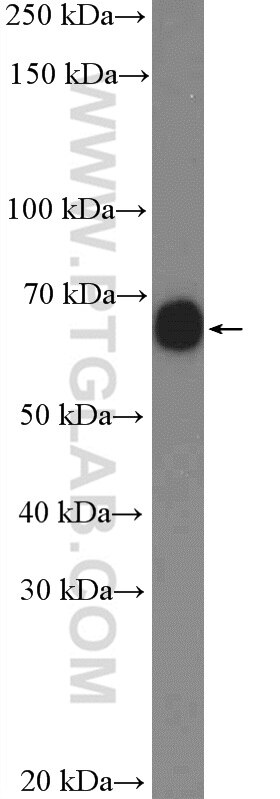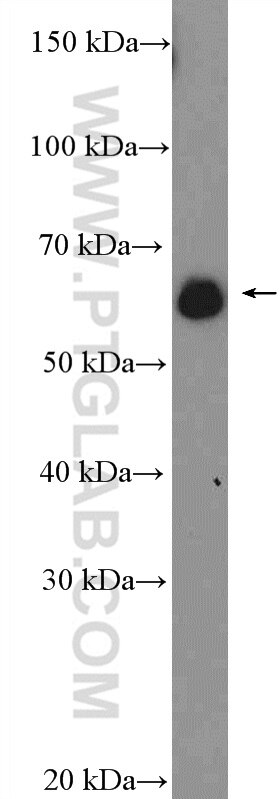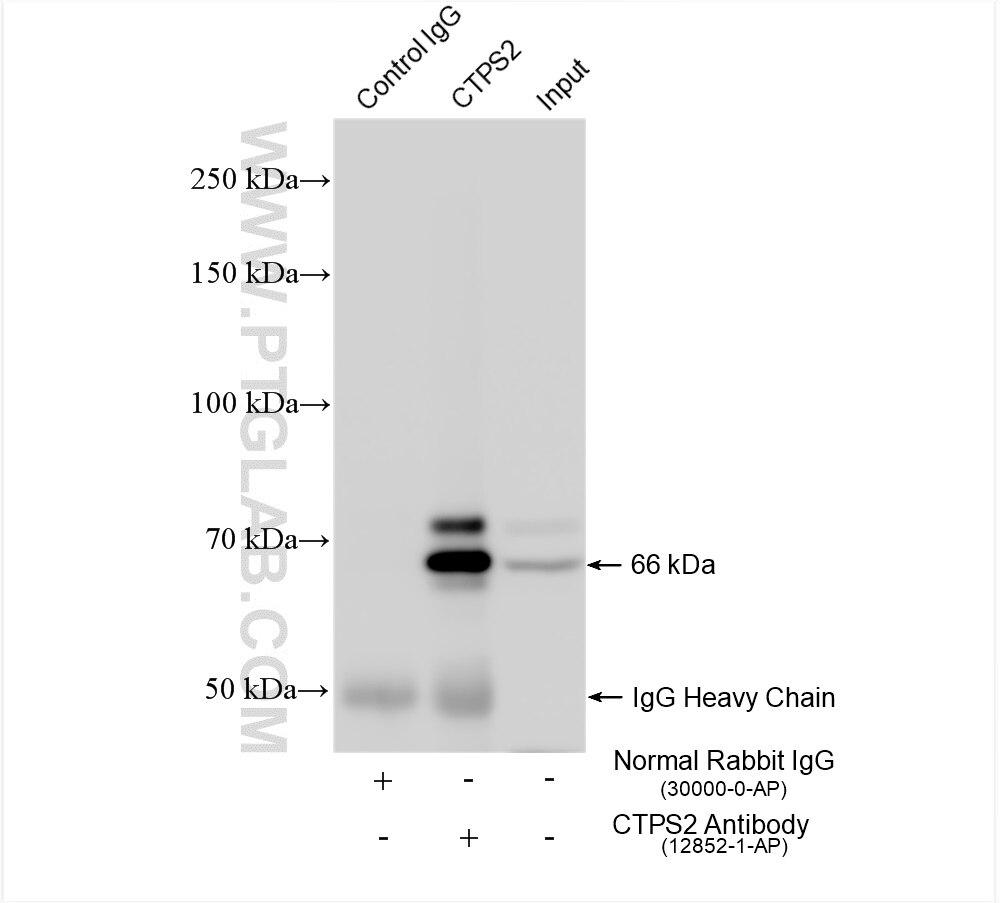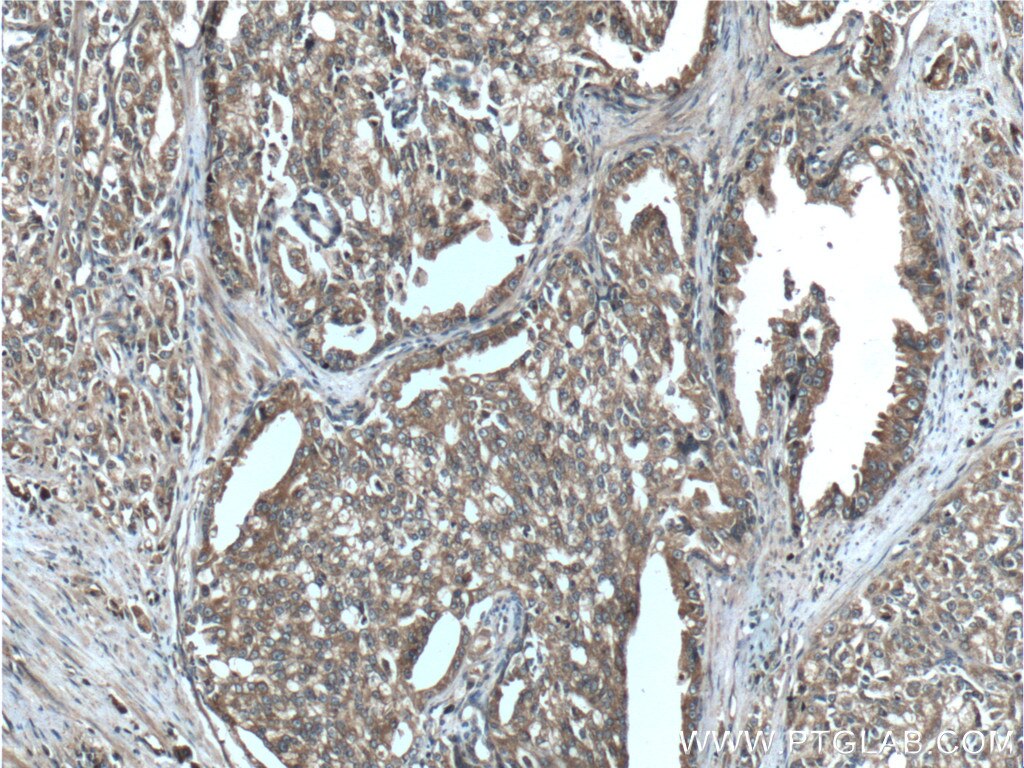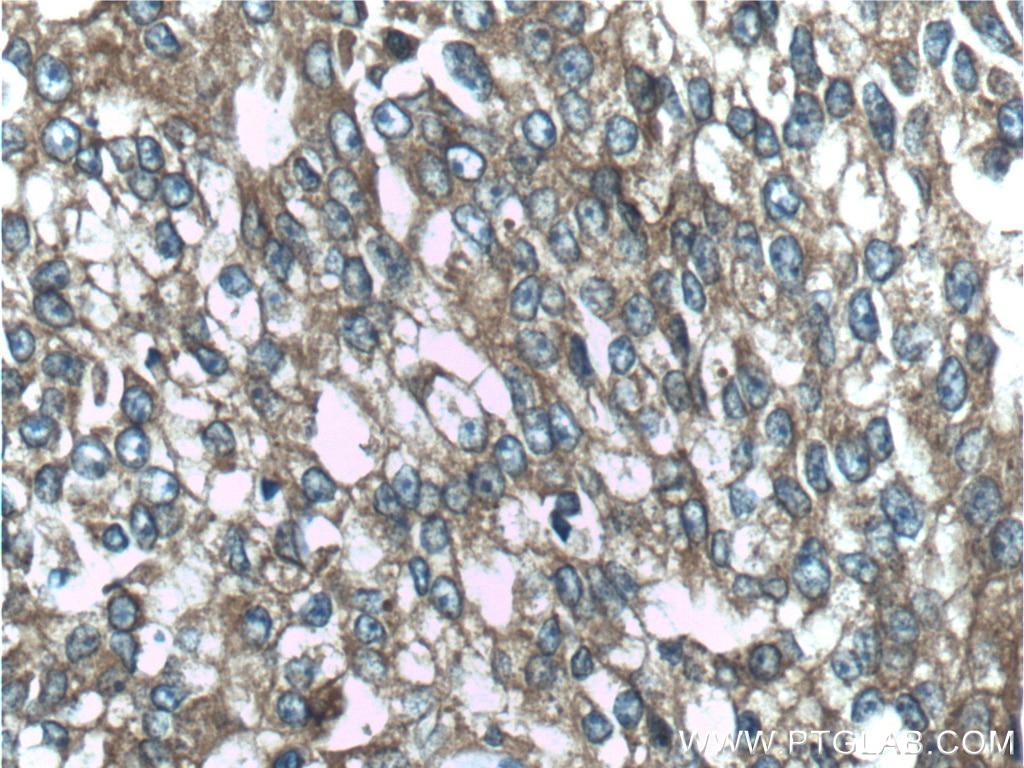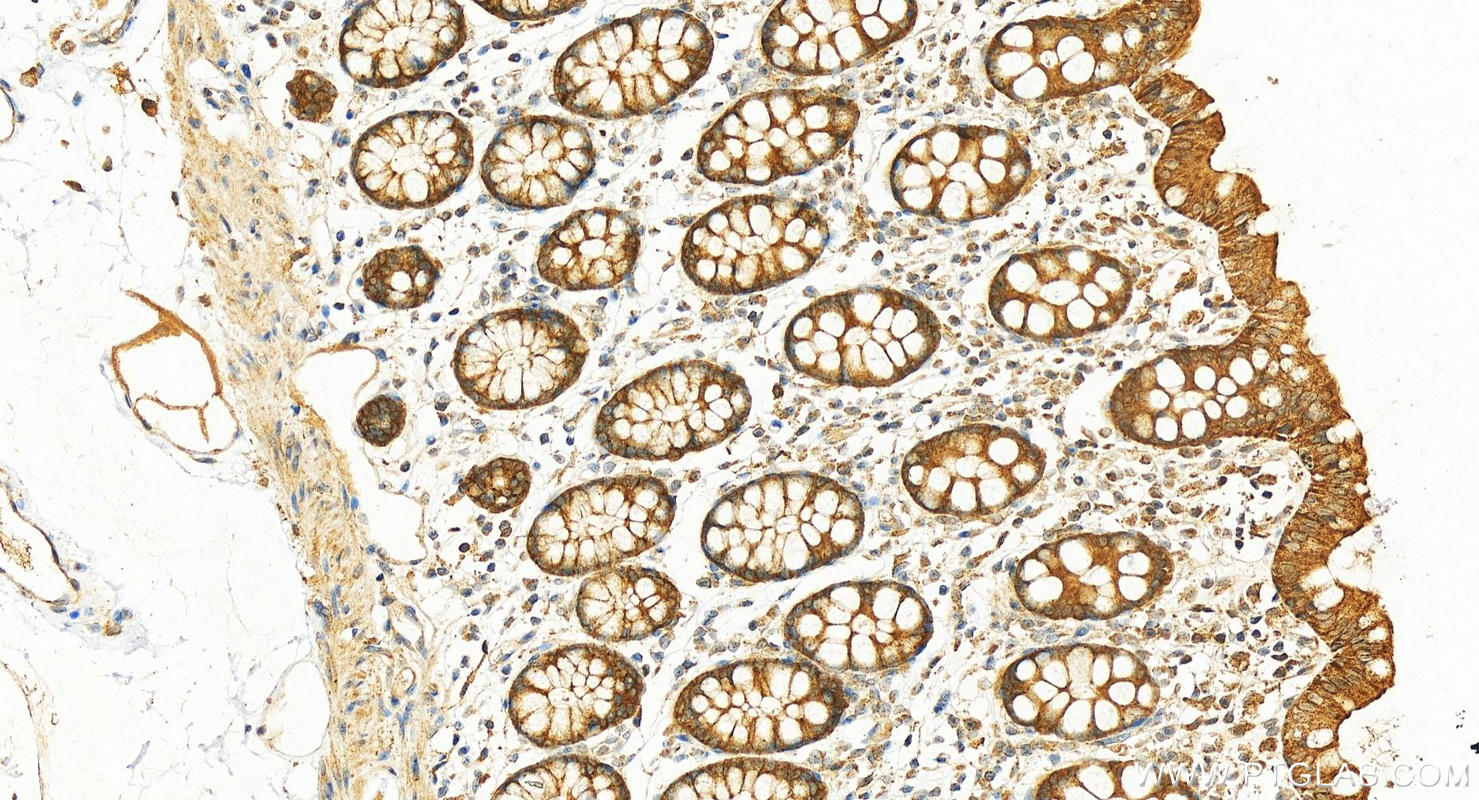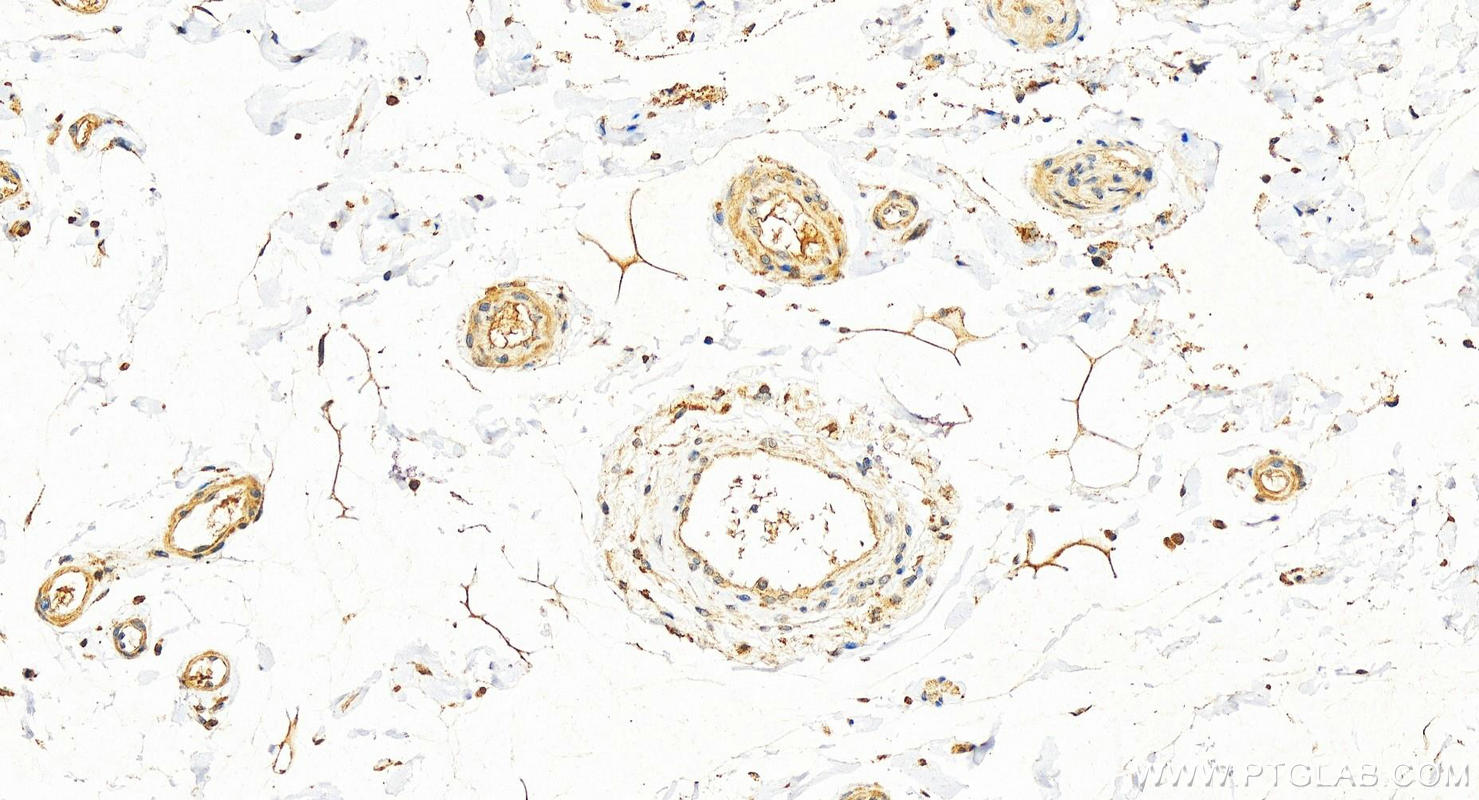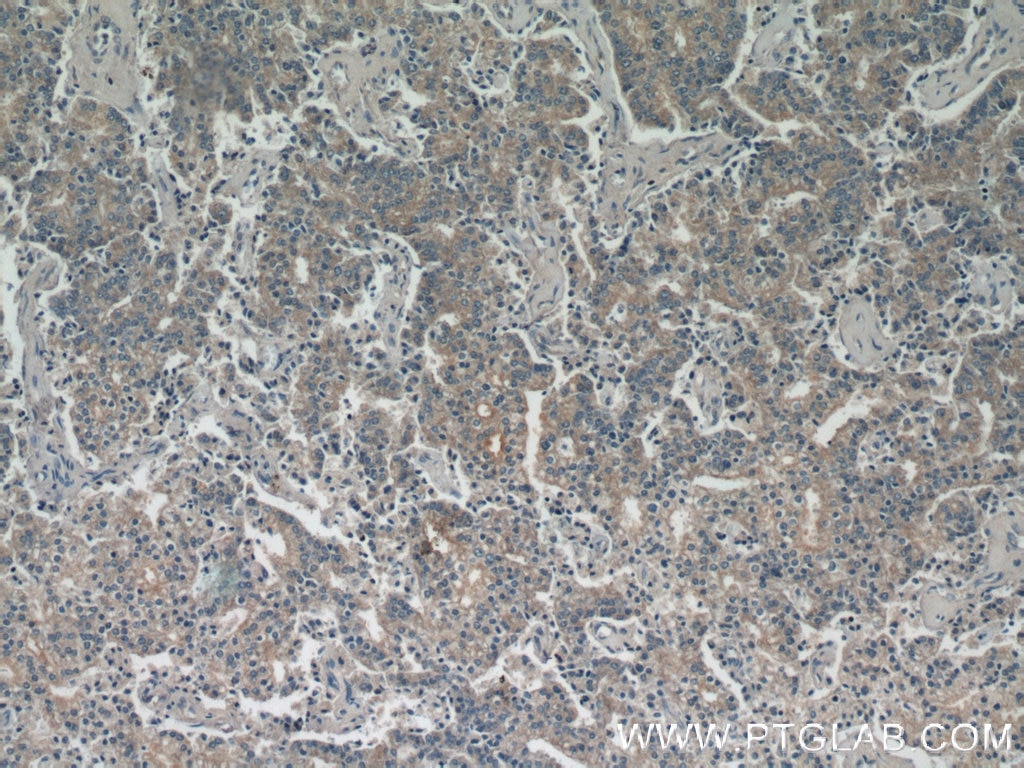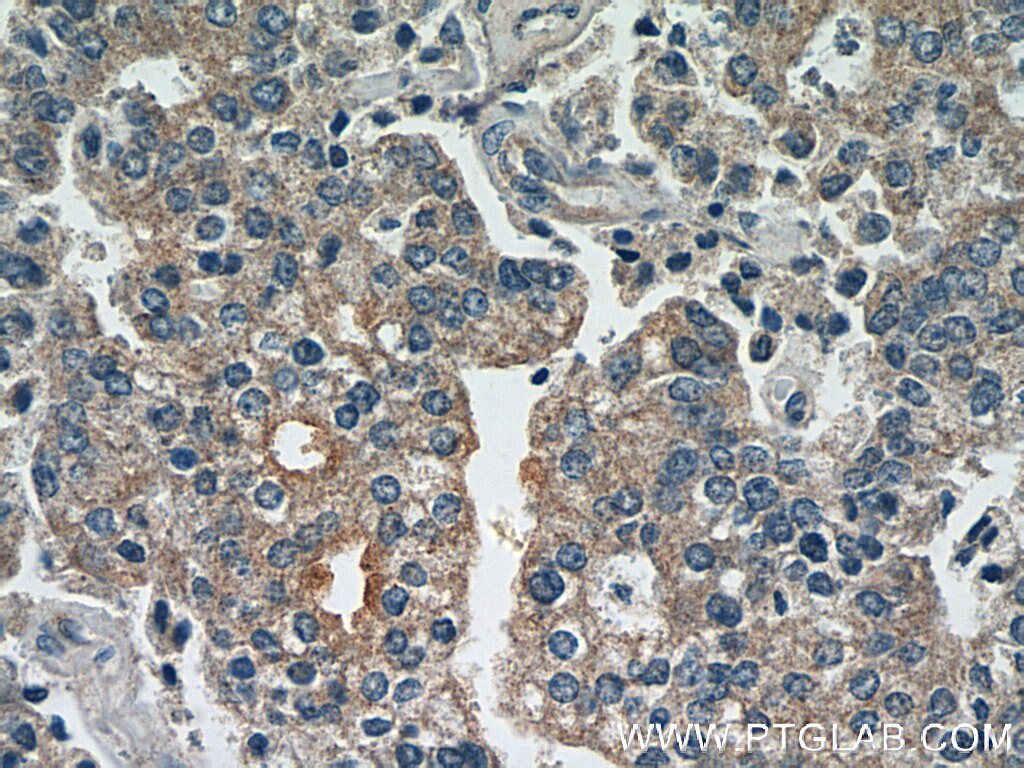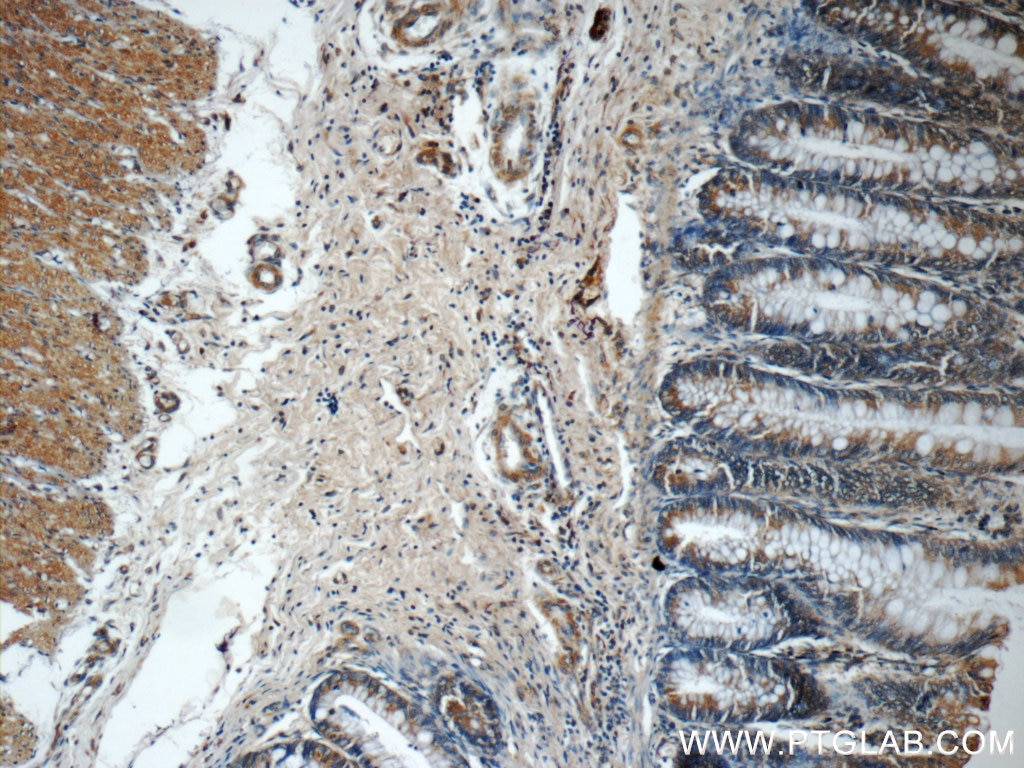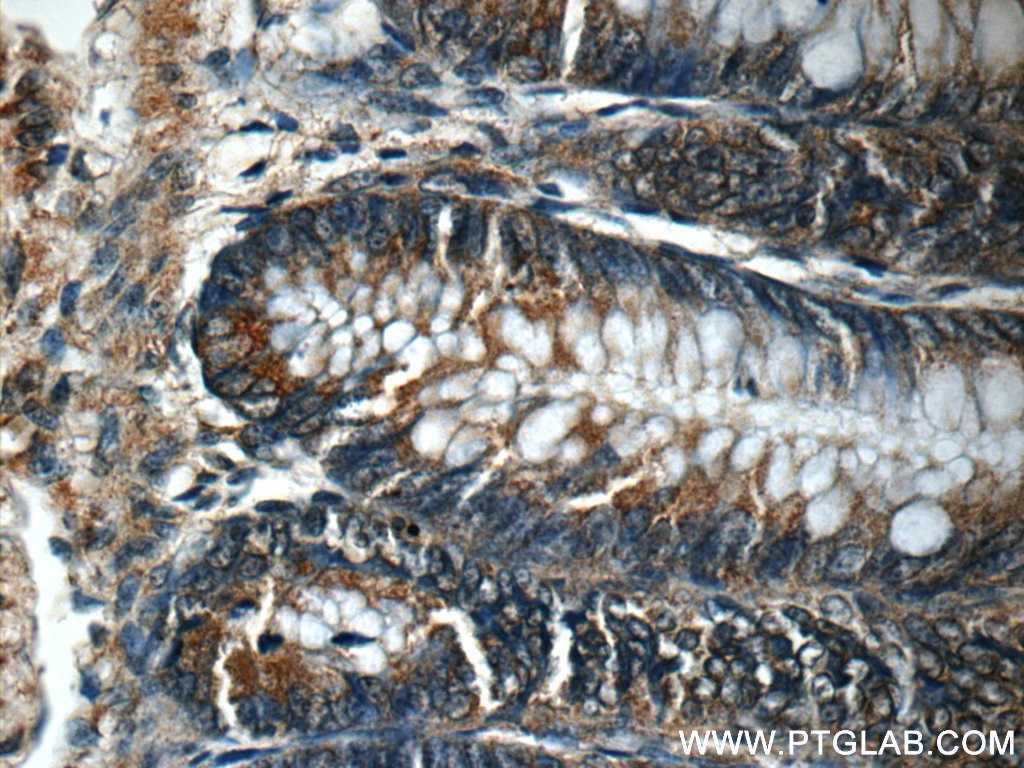Validation Data Gallery
Tested Applications
| Positive WB detected in | mouse testis tissue, HeLa cells, human adrenal gland tissue |
| Positive IP detected in | HeLa cells |
| Positive IHC detected in | human colon tissue, human prostate cancer tissue Note: suggested antigen retrieval with TE buffer pH 9.0; (*) Alternatively, antigen retrieval may be performed with citrate buffer pH 6.0 |
Recommended dilution
| Application | Dilution |
|---|---|
| Western Blot (WB) | WB : 1:500-1:2000 |
| Immunoprecipitation (IP) | IP : 0.5-4.0 ug for 1.0-3.0 mg of total protein lysate |
| Immunohistochemistry (IHC) | IHC : 1:500-1:2000 |
| It is recommended that this reagent should be titrated in each testing system to obtain optimal results. | |
| Sample-dependent, Check data in validation data gallery. | |
Published Applications
| WB | See 1 publications below |
| IF | See 2 publications below |
Product Information
12852-1-AP targets CTPS2 in WB, IHC, IF, IP, ELISA applications and shows reactivity with human, mouse, rat samples.
| Tested Reactivity | human, mouse, rat |
| Cited Reactivity | human |
| Host / Isotype | Rabbit / IgG |
| Class | Polyclonal |
| Type | Antibody |
| Immunogen |
CatNo: Ag3490 Product name: Recombinant human CTPS2 protein Source: e coli.-derived, PGEX-4T Tag: GST Domain: 30-373 aa of BC034986 Sequence: CGLRVTAIKIDPYINIDAGTFSPYEHGEVFVLNDGGEVDLDLGNYERFLDINLYKDNNITTGKIYQHVINKERRGDYLGKTVQVVPHITDAVQEWVMNQAKVPVDGNKEEPQICVIELGGTIGDIEGMPFVEAFRQFQFKAKRENFCNIHVSLVPQLSATGEQKTKPTQNSVRALRGLGLSPDLIVCRSSTPIEMAVKEKISMFCHVNPEQVICIHDVSSTYRVPVLLEEQSIVKYFKERLHLPIGDSASNLLFKWRNMADRYERLQKICSIALVGKYTKLRDCYASVFKALEHSALAINHKLNLMYIDSIDLEKITETEDPVKFHEAWQKLCKADGILVPGGF 相同性解析による交差性が予測される生物種 |
| Full Name | CTP synthase II |
| Calculated molecular weight | 586 aa, 66 kDa |
| Observed molecular weight | 66 kDa |
| GenBank accession number | BC034986 |
| Gene Symbol | CTPS2 |
| Gene ID (NCBI) | 56474 |
| RRID | AB_10639520 |
| Conjugate | Unconjugated |
| Form | |
| Form | Liquid |
| Purification Method | Antigen affinity purification |
| UNIPROT ID | Q9NRF8 |
| Storage Buffer | PBS with 0.02% sodium azide and 50% glycerol{{ptg:BufferTemp}}7.3 |
| Storage Conditions | Store at -20°C. Stable for one year after shipment. Aliquoting is unnecessary for -20oC storage. |
Background Information
CTPS2 (CTP synthase 2) is also named as UTP--ammonia ligase 2 and belongs to the CTP synthase family.It catalyzes the ATP-dependent amination of UTP to CTP with either L-glutamine or ammonia as the source of nitrogen and constitutes the rate-limiting enzyme in the synthesis of cytosine nucleotides.
Protocols
| Product Specific Protocols | |
|---|---|
| IHC protocol for CTPS2 antibody 12852-1-AP | Download protocol |
| IP protocol for CTPS2 antibody 12852-1-AP | Download protocol |
| WB protocol for CTPS2 antibody 12852-1-AP | Download protocol |
| Standard Protocols | |
|---|---|
| Click here to view our Standard Protocols |
Publications
| Species | Application | Title |
|---|---|---|
Int Rev Cell Mol Biol Molecular cell biology and immunobiology of mammalian rod/ring structures. | ||
J Cell Sci Rod and Ring formation from IMP dehydrogenase is regulated via the one-carbon metabolic pathway. | ||
J Genet Genomics Assembly of IMPDH2-based, CTPS-based, and mixed rod/ring structures is dependent on cell type and conditions of induction. |

